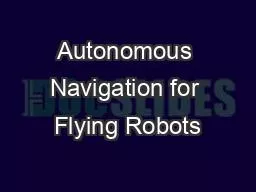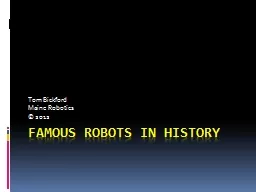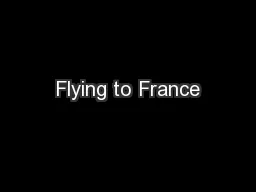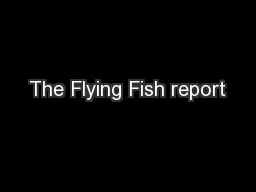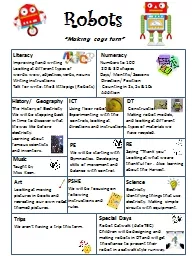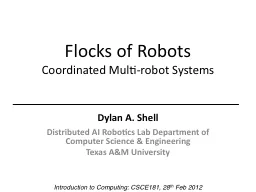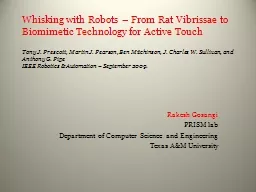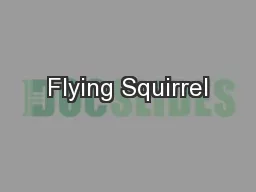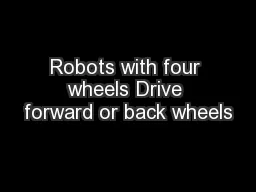PPT-Autonomous Navigation for Flying Robots
Author : dsuser1 | Published Date : 2020-07-03
Lecture 23 2D Robot Example Jürgen Sturm Technische Universität München 2D Robot Robot is located somewhere in space Jürgen Sturm Autonomous Navigation
Presentation Embed Code
Download Presentation
Download Presentation The PPT/PDF document "Autonomous Navigation for Flying Robots" is the property of its rightful owner. Permission is granted to download and print the materials on this website for personal, non-commercial use only, and to display it on your personal computer provided you do not modify the materials and that you retain all copyright notices contained in the materials. By downloading content from our website, you accept the terms of this agreement.
Autonomous Navigation for Flying Robots: Transcript
Download Rules Of Document
"Autonomous Navigation for Flying Robots"The content belongs to its owner. You may download and print it for personal use, without modification, and keep all copyright notices. By downloading, you agree to these terms.
Related Documents

